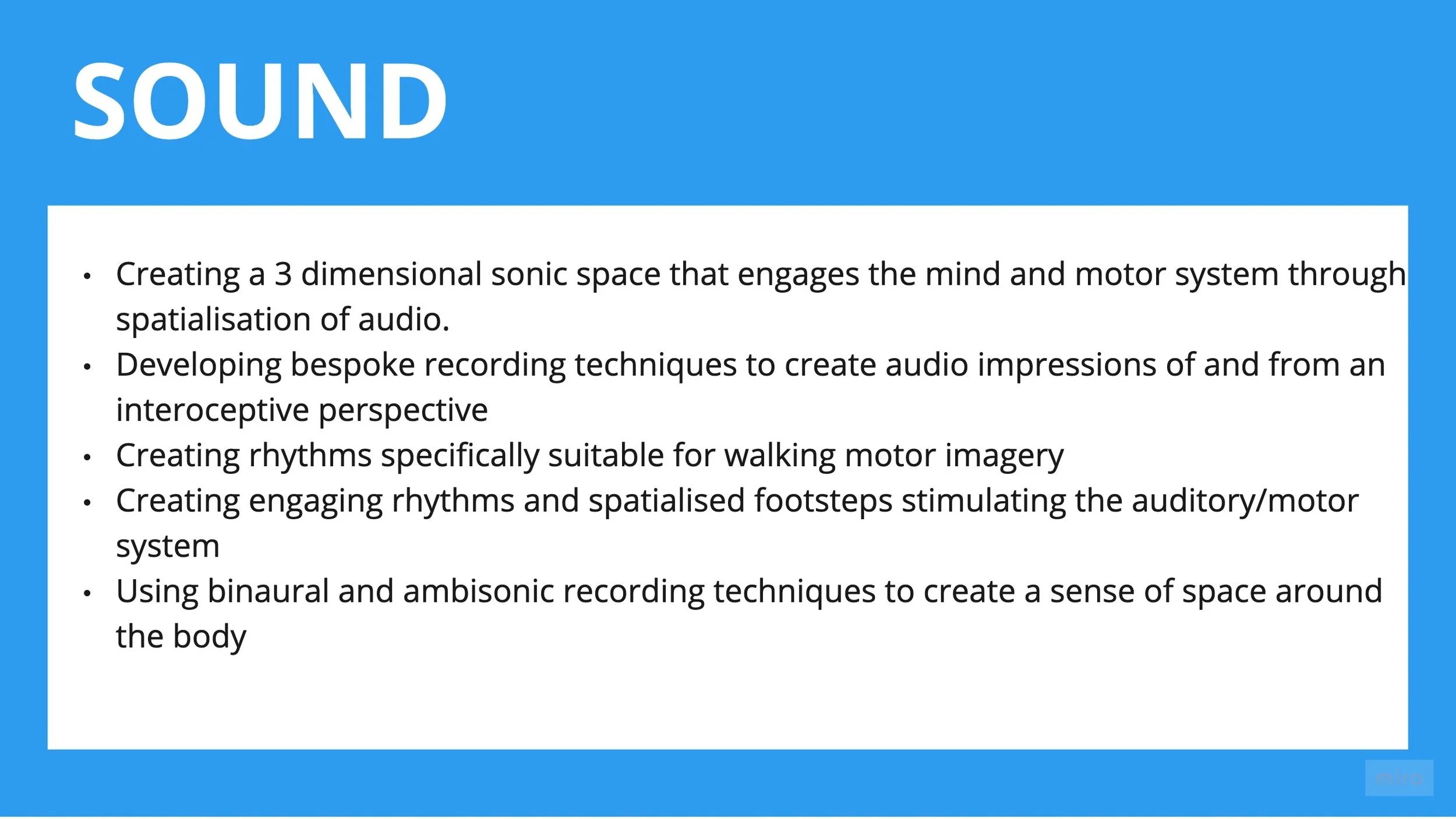
AIM for Parkinson’s
AIM for Parkinson’s was developed as part of a practice based PhD research project at Queen’s University Belfast.
The Worldbuilders PhD research explored how to combine mental motor imagery exercises and instructions with story within an immersive soundscape.
The stories incorporate audio cues in the form of rhythms, music and footsteps to stimulate motor imagery practice for walking. It helps the participant to build a world from 1st person perspective adding sensory information and body awareness.
The innovation of the project is the use of immersive audio to enhance motor imagery practice by engaging the auditory motor system and connecting actions with the virtual environment based on recent embodied and enactive cognitive theory.
The project was developed in consultations with people living with Parkinson’s disease.
Project Benefits
Learning and practicing motor imagery skills through creative exercises of the imagination.
Creating motor imagery with sensory details with precision and from the 1st person perspective.
Easy to use in your own home through a smartphone and a set of headphones.
Developing and keeping up the skill through engaging stories and immersive audio experiences
Stimulating and emotionally engaging exercises without feeling like treatment, encouraging continued practice as repetition is important.
Project Aims and Challenges
The project aims of incorporating motor imagery within the narrative and sound design presented challenges to traditional immersive storytelling techniques. It required innovative approaches, unique sound design solutions and a sensitivity to the needs of the specific audience of people living with Parkinson’s disease.
To learn a new skills there is need to both break down the components and also to repeat regularly. The practice audios are examples of separating out the components whilst the idea of a range of stories allows for variation whilst repeating the motor imagery skills.
Some terminology:
Immersive Audio - a 360 soundscape recorded with special microphones to achieve a sense of depth and spatialised sounds in a similar way to how our ears hears the world.
Motor Imagery - The act of imagining movements or actions without physically moving.
Story - In this project I refer to story as an imaginary narrative, context or environment within which to practice motor imagery skills.
Audio Cues - Rhythmical cues in the form of music, rhythms or footsteps that enhance the motor system and helps with mobility.
What the Scientists say about Motor Imagery for PD:
“Motor Imagery is a complex process that is not easy to integrate into clinical practice. Its association with physical practice (PP), however, seems to be more effective than PP alone in enhancing motor function.”
“Our study provides preliminary evidence for the clinical application and effectiveness of imagery training in PD. The demonstrated gains in imagery ability and motor and non- motor functions in people with PD following Dynamic Neuro-cognitive Imagery training further support the incorporation of imagery training in PD rehabilitation. Research into imagery and motor control and planning in PD is warranted..”
The Thesis
The PhD research consist of the portfolio of audios and a the thesis which is titled: Worldbuilders: Towards a dramaturgy of metaplasticity. Affecting embodied change through immersive audio and story.
The thesis will suggests strategies and approaches in how to create an immersive audio experience and stories responding to the needs of a specific audience group, that engages and affects the participants metaplasticity, whilst being artistically engaging and stimulating.
The PhD project is developed at the Sonic Arts Research Centre, Queen’s University Belfast
Supervisor: Prof. Paul Stapleton
E-mail: p.stapleton@qub.ac.uk
Queen’s University Belfast, School of Arts, English and Languages Ethics committee has reviewed and approved this research project.




